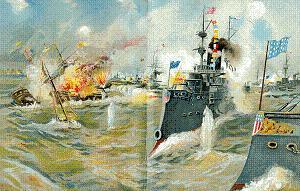 With the final conquest of the American frontier(Red Indians),US capital started eyeing new areas of investment. Arriving late on the scene as a world power the US could only acquire new territory at the expense of established European states.
With the final conquest of the American frontier(Red Indians),US capital started eyeing new areas of investment. Arriving late on the scene as a world power the US could only acquire new territory at the expense of established European states.
Cuba had long been eyed by the South as a means of expanding US slave empire. As plans started for the construction of a canal across Central America, control of Cuba became even more essential. Also the growing trade with China and Asia created a need for a US base in the western Pacific. Philippines was ideal for this purpose. At the time both were Spanish possessions.
Spain, weakened by 31/2 centuries of fighting was hardly in a position to oppose the United States. The only issue for US was how to convince a public raised on the ideals of the American Revolution and the civil war to accept an imperialistic war aimed at capturing Cuba and the Philipines. The fortunate outbreak of popular rebellions against Spanish rule in both places provided US government with the required justification.
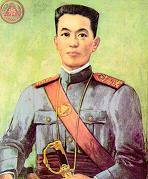 The Spanish -Philipine war for independence(1896) was led by Emilio Aguinaldo but by 1898 the Spaniards had crushed it and exiled its leaders.Meanwhile Spain had also been fighting a loosing battle with the Americans in which her colonies of Cuba, Puerto Rico, and Guam were over run and her Atlantic Fleet devastated outside Santiago, Cuba.
The Spanish -Philipine war for independence(1896) was led by Emilio Aguinaldo but by 1898 the Spaniards had crushed it and exiled its leaders.Meanwhile Spain had also been fighting a loosing battle with the Americans in which her colonies of Cuba, Puerto Rico, and Guam were over run and her Atlantic Fleet devastated outside Santiago, Cuba.
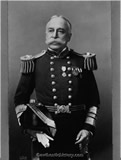 Hardly had Emilio Aguinaldo been exiled and the ‘rebellion’ in the Philipine crushed by Spain, that Admiral Dewey showed up with the US fleet to wipe out Spain’s Pacific Fleet in the Battle of Manila Bay.The Americans now unleashed the Flipnos on the Spanish, holding out the promise of independence.
Hardly had Emilio Aguinaldo been exiled and the ‘rebellion’ in the Philipine crushed by Spain, that Admiral Dewey showed up with the US fleet to wipe out Spain’s Pacific Fleet in the Battle of Manila Bay.The Americans now unleashed the Flipnos on the Spanish, holding out the promise of independence.
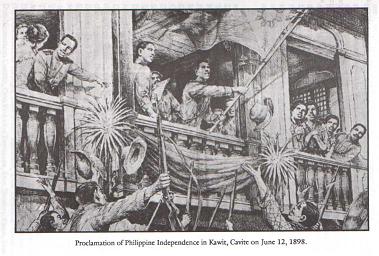 Motivated by the promise,the Filipnos(with US aid) wiped out the Spanish from the countryside and declared Philippine independence on 12 June 1898. But Philippine independence was no part of US plans! And so as early as January of 1899 the two sides faced each other around the city of Manila.
Motivated by the promise,the Filipnos(with US aid) wiped out the Spanish from the countryside and declared Philippine independence on 12 June 1898. But Philippine independence was no part of US plans! And so as early as January of 1899 the two sides faced each other around the city of Manila.
Gore Vidal writes in his book, The American Presidency: “President William McKinley decided we ought to keep the Philippines in order to Christianize the natives. When reminded that Filipinos were already Roman Catholic, the President responded, ‘Exactly’. The US then began it’s own conquest of The Philipines.”
On February 4, 1899, Admiral Dewey steamed up the Pasig River and fired 500-pound shells into the Filipino trenches. Dead Filipinos were piled so high that the Americans used their bodies for breastworks. Quickly overwhelming the Filipino positions American forces spread outward from Manila, using superior firepower, mobile artillery and command of the sea to full effect.
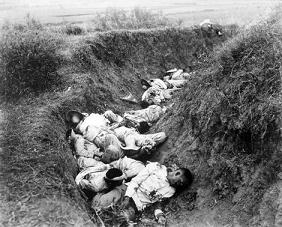 U.S. employed only 69,000 troops but proved more ruthless then the Spainards.Backed by modern cannons, Gatling guns and naval canons, they demonstrated an unflinching willingness to kill the Filipino; entire villages were destroyed, civilians murdered, prisoners tortured and mutilated along with a host of other atrocities. Many American officers and non-coms having served in the Indian Wars, applied their old belief that “the only good Indian was a dead Indian” to the Filipinos.
U.S. employed only 69,000 troops but proved more ruthless then the Spainards.Backed by modern cannons, Gatling guns and naval canons, they demonstrated an unflinching willingness to kill the Filipino; entire villages were destroyed, civilians murdered, prisoners tortured and mutilated along with a host of other atrocities. Many American officers and non-coms having served in the Indian Wars, applied their old belief that “the only good Indian was a dead Indian” to the Filipinos.
Captain Elliott, of the 20 th Kansas Regiment, wrote home in a letter dated February 27th:”Talk about war being ‘hell,’ this war beats the hottest estimate ever made of that locality. Caloocan was supposed to contain seventeen thousand inhabitants. The Twentieth Kansas swept through it, and now Caloocan contains not one living native. Of the buildings, the battered walls of the great church and dismal prison alone remain. The village of Maypaja, where our first fight occurred on the night of the fourth, had five thousand people on that day, — now not one stone remains upon top of another.
In A People’s History of the United States Howard Zinn writes of these American war crimes in the Philippines:
“In the province of Batangas, the secretary of the province estimated that of the population of 300,000, one third had been killed by combat, famine, or disease. “A British witness said: ‘This is not war; it is simply massacre and murderous butchery.'”
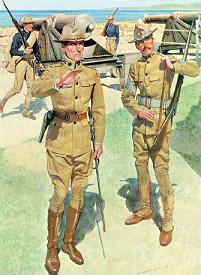
The Catholic Flipnos succumbed as easily to the US forces ,as their savage ancestors had to the Spainards.Emilio Aguinaldo was captured in March, 1902, and organized opposition from his followers soon faded.
On 4 July 1902 President Theodore Roosevelt noted in the declaration of termination, “peace has been established in all parts of the archipelago except in the country inhabited by the Moro tribes, to which this proclamation does not apply.
Officially the Filipnos lost 20,000 military dead and minimum 200,000 civilian dead. Historians however place the numbers of civilian dead at 500,000 or even higher.American losses in the war were only .
The Americans continued to rule the islands until the Filipino came to accept what American deemed the ignorance and recalcitrance of a primitive race, own American values and institutions, and run their society in ways acceptable to the United States.This was achieved by 1946.
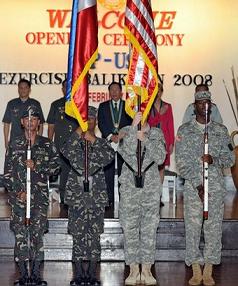 Thus was born the present American Empire, consecrated with the blood of Philippine , men ,women and children. This was the point in American history when the emphasis shifted from the domestic abuse and exploitation of Indians and Africans to the even more profitable pursuits of imperialism and international terrorism.
Thus was born the present American Empire, consecrated with the blood of Philippine , men ,women and children. This was the point in American history when the emphasis shifted from the domestic abuse and exploitation of Indians and Africans to the even more profitable pursuits of imperialism and international terrorism.
American Contact With The Moros
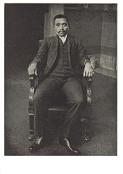
Bates Treaty .
After the Spanish-American treaty, Sultan of Sulu, Jamalul Kiram II was disappointed, as he had expected to regain sovereignty over the Sulus.In order to keep the Moros neutral as the US fought the North Brigadier General John C. Bates was sent to negotiate a treaty with The Sultan.
He concluded The Bates Treaty based on the earlier Spanish treaty, and also retained it’s translation error: The English version describing the sultanat as a dependency, while the Tausug version described it as a protectorate.How ever it did recognise the Sultan of Sulu as the supreme authority within Moroland.It also allowed the Americans to establish. The military District of Mindanao-Jolo, under the command of General Bates. He was allowed 2 infantry regiments in entire Mindanao, giving him only enough strength to control the District headquarters at Zamboanga and its surrounding peninsula.
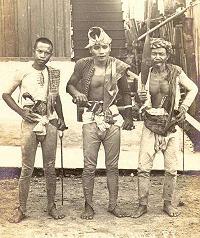 In theory, the Sultan of Sulu was now the supreme authority.
In theory, the Sultan of Sulu was now the supreme authority.
In practice how ever (and this was something the Americans did not know at the time ) the Moros were fragmented and divided.Sultanate of Maguindanao was independent and autonomous but recognized the supremacy of Sulu in religious and international matters. Also the Sultan of Sulu had less power than any of the major datus of the Sulus, who were feeling slighted – and therefore – resisting recognition of the treaty. Matters were even worse on Mindanao. The Lake Lanao district had more than 200 feuding datus, while Cotabato area was under the loose overlordship of Datu Ali. Also apart from the the two true Sultans, there were some 32 self-proclaimed Sultans whose claim rested on their controlling more territory than a normal datu.
After crushing the Philippine Republican fighters ,the Americans tried to take advantage of above mentioned weaknesses to also “Americanise” the Moros . The comparatively ill equipped and less sophisticated Moros(Muslims of Philippines) decided to resist –and they continued doing so till they had forced the Americans to recognize their rights as a distinct people.This ensured that when the Americans left,the Moros continue clinging to their Muslim values.
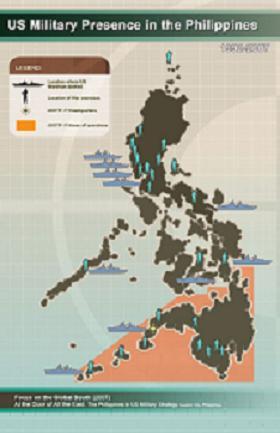 U.S. Colonial Adminstration In Moroland Capistrano commanding The Filipino forces in Moroland surrendered on March 27, 1901. Full-fledged conflict between US forces and Moros broke out in May 1903 following Moro resistance to a negaton of The Bates treaty by US troops out to gain greater control over Moroland.
U.S. Colonial Adminstration In Moroland Capistrano commanding The Filipino forces in Moroland surrendered on March 27, 1901. Full-fledged conflict between US forces and Moros broke out in May 1903 following Moro resistance to a negaton of The Bates treaty by US troops out to gain greater control over Moroland.
Alonto in his , “Four centuries of jihad…” writes: “Catholic Spain had been driven by the spirit of the Inquisition, America was inspired by the unholy doctrines of ‘Manifest Destiny’ to bring the ‘blessings’ of western civilization to these ‘barbarians’ in Southeast Asia. But the Moro ‘barbarians’, much to the Americans’ surprise, were not easily subdued.”



Moro Weapons And Tactics.The US troops found themselves engaging an enemy who quickly earned their respect. Relatively poorly armed ; they possessed a variety of older weapons including a few muzzle-loaders and some primitive brass cannon. However it was their skill and surprising effectiveness in using edged weapons which generated the greatest respect and fear. U.S. troops learnt to respect the capabilities of the barung with its foot-and-a-half leaf-shaped blade; the three-and-a-half foot kampilan long sword,and the kris, a superb weapon of varying length with a distinctive wavy-edged blade. .
Moro attacks on moving columns or sleeping encampments were sudden, often involving bloody hand-to-hand fighting, as kris and spear wielding Moros, closed quickly with better-armed Americans and used their edged weapons and spears to great effect.The Moros were equally adept at jungle, forest, and swamp ambushes and also fought well from their forts, called cottas (or kutas ). Distinguishing Moro male combatants from females–who sometimes were combatants as well–was a problem since women were attired in much the same way as male fighters.
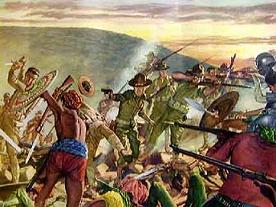
Juramentado .U.S. troops were amazed at the the extraordinary vitality of Moro fighters,who continued charging even after being shot multiple times. The replacement of the .38 caliber Army revolver with the harder hitting .45 caliber automatic was in part a consequence of the difficulty in stopping them . Accounts also abounded of peaceful Moros suddenly drawing kris and killing multiple American soldiers or civilians before being killed themselves. Such “suicide-attacks” or “willing self-destruction” was appaling for the Americans –who derisively called it runnung ‘amok’.
The earlier Spanish had called this juramentado, (meaning “oath-taking”). It consisted of dedication and purification rites conducted with family and religious authorities. Those who underwent this rite swore to kill as many enemy as possible before dying, the reward being Paradise.
From the Moro viewpoint , the above description was far from adequate. As a Moro Islamic spokesmen describes it: “…mujahideen took it as a personal duty to Allah to continue to fight aggressors to the death, even if a Muslim leader surrendered. It became common for a lone Muslim mujahid to attack American soldiers and camps, killing many of them before losing his life. Our enemies call this act juramentado or amok; Moros refer to this as sabil or prang sabil, from the Arabic jihad fi sabilillah.”
Moro Resistance Prior To 1903.On March 20, 1900, the US unilaterally upgraded the District of Mindanao-Jolo to a full Department. A third infantry regiment was inducted. Moro resentment of this led to three ambushes of American troops . This prompted Maj. Gen. Adna R. Chaffee, the military governor of the Philippines, to issue a declaration on April 13, 1902, demanding that the offending datus hand over the killers of American troops and stolen government property.The Moros refused to comply.
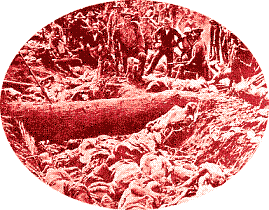 Col. Frank Baldwin set out to settle matters . On May 2, 1902, Baldwin’s expedition attacked a Moro cotta at the Battle of Pandapatan, also known as the Battle of Bayan. Pandapatan’s defenses were unexpectedly strong, leading to 18 American casualties . On the second day, the Americans used ladders and moat-bridging tools to break through the Moro fortifications, and a general slaughter of the defenders followed.
Col. Frank Baldwin set out to settle matters . On May 2, 1902, Baldwin’s expedition attacked a Moro cotta at the Battle of Pandapatan, also known as the Battle of Bayan. Pandapatan’s defenses were unexpectedly strong, leading to 18 American casualties . On the second day, the Americans used ladders and moat-bridging tools to break through the Moro fortifications, and a general slaughter of the defenders followed.
On June 30, Pershing assumed command, and Baldwin returned to Malabang. Pershing realising the futility of all out onslaught against the Moros followed a policy of pious paternalism punctuated by brutal pacification operations if neccessary. On February 10, 1903, Pershing won the hearts of the Moros and was declared a datu by the formerly hostile Pandita Sajiduciaman of the Bayan Moros (who had been defeated at the Battle of Pandapatan) – the only American to be so honored.
Establishment Of Moro Province
Even at this early stage of their operations the American showed a healthy respect for the fighting qualities of the Moros as effected by their religious beliefs in the hope it would enable speedier pacification.
First they recognised the unity of various Muslim ethnolinguistic groups under the single label “Moro” rather than focusing on the “tribal” divisions among them. Thus they treated the South as a separate entity in the form of a Moro Province.It was created on June 1, 1903, and included “all of the territory of the Philippines lying south of the eight parallel, excepting the island of Palawan and the eastern portion of the northwest peninsula of Mindanao.”
The province had five districts: Cotabato, Davao, Lanao, Sulu, and Zamboanga. Each districts were sub-divided into tribal wards, with major datus serving as ward chiefs and minor datus serving as deputies, judges, and sheriffs. All higher civil service positions were held by US military officers. Also the American took care not to encourage any Christian proselytization in Moroland.
The province had three govorners in all. Wood’s governorship saw the bloodiest fighting ..Bliss’ tenure is regarded as a “peace era”. However, this was at the price of tolerating a great degree of lawlessness. Pershing who had won the hearts of the Moros as an officer ,was finally (1909) sent as a governor to solve the law and order problem.He decided to disarm the Moros by December 1, 1911.Resistance to disarmament was particularly fierce in the district of Jolo and led to the Second Battle of Bud Dajo and the Battle of Bud Bagsak.
By 1913, Pershing was convinced that Moro Province needed transition to full civil government .Frequent rotation of military officers was a traumatic experience for the Moros,whose loyalty was traditionally to personalities rather then office . Civil adminstrators would provide for the required lengthy tenure in office.In the December 1913, Pershing was replaced as governor of Moro Province by a civilian, Frank Carpenter.
During their operations against the Moro , the American losses were 630 killed and 323 wounded. The Philippine Scouts and The Philippine Constabulary who augmented American forces during the campaign suffered 866 killed and 839 wounded. On the Moro side, estimates range from 10,000 to well over 20,000 men,women and children killed, with an unknown number wounded.
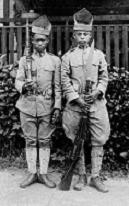 Department of Mindanao and Sulu.
Department of Mindanao and Sulu.
On July 23, 1914, the Americans replaced the Moro Province with the Department of Mindanao and Sulu. For adminstrative purposes the former Moro province was now divided into the districts of Zamboanga. Agusan, Bukidnon, Cotabato, Davao, Misamis, Palawan, Sulu, and Surigao. It was headed by a governor, subordinate to the U.S. Governor-General of the Philippine Islands. Frank C. Carpenter served as its governor from 1914 to 1920.
This too was eventually abolished in 1920, after the responsibility for the administration of Moro lands was transferred to the Bureau of Non-Christian Tribes of the Philippines’ Department of the Interior.
Approaching Independence? With the approach of Philippine Independence, American policy toward Moros started showing signs of growing Filipno influence. The Philippine Commonwealth was established in 1935, and The Bureau of Non-Christian Tribes abolished in 1936. As a first step it was decided Moros were not to be governed any differently from other citizens of the Commonwealth. This was followed by an even more sinster policy priority – the economic development of Mindanao for the benefit of the nation! This necessarily involved the migration of a Christians into Muslim regions.
Unlike tribal Filipinos, Moros were overwhelmingly lowlanders who had owned their land for hundreds of years . The Bureau of Lands conducted land surveys throughout Muslim areas and ordered processing of homestead applications. The American colonial administrators inniated this reform with the intent that land registration would ensure a greater sence of security for Muslim commoners against land grabbing datus.
These two policies however were persued far too vigorously after Independence –and often selectively in favour of Christian migrants . The new Philippine government attempted to use these to make the Moros an impoverished minority in their own lands .This as we shall see next, led to a re-emergence of the historic Moro struggle for retention of their separate rights and identity.
THIS MATERIAL, IF IT HOPES TO BE ACCURATE, SHOULD INCLUDE A LONGER EXPLANATION ON ‘THE TREATY OF PARIS’ BECAUSE THAT USHERED IN THE AMERICAN OCCUPATION OF THE PHILIPPINES.
The 1898 Treaty of Paris between Spain and the United States discussed the terms ending the Spain-US war. This Treaty of Peace ceded the Philippines to the United States for $20,000,000. The Treaty is a tale of three cities: Manila, Washington and Paris.
IT SHOULD INCLUDE THE FACT THAT MUSLIMS ARE NOT INDIGENOUS FILIPINO PEOPLE BECAUSE ISLAM WAS, IN ITSELF, A COLONIZER IN THE PHILIPPINES.
MUSLIMS WERE NOT A MINORITY IN THEIR OWN LANDS. THEY CANNOT CLAIM ANCESTRAL DOMAIN SINCE ISLAM WAS A COLONIZER. THE “LUMADS” OF MINDANAO ARE THE ONLY INDIGENOUS PEOPLE OF THE REGION.
“JURAMENTADO” DOES NOT MEAN “OATH-TAKING.” IT WASN’T THE AMERICANS THAT CALLED THE SOME MUSLIMS THIS, AND MEANT “RUNNING AMOK.” IT IS QUITE OBVIOUS THAT “JURAMENTADO” IS A SPANISH WORD.
THE MUSLIMS REBELLED AGAINST MINDANAO BEING INCLUDED BY THE COLONIZERS TO THE REST OF THE PHILIPPINES. HENCE, THEIR SEPARATIST STANCE.



